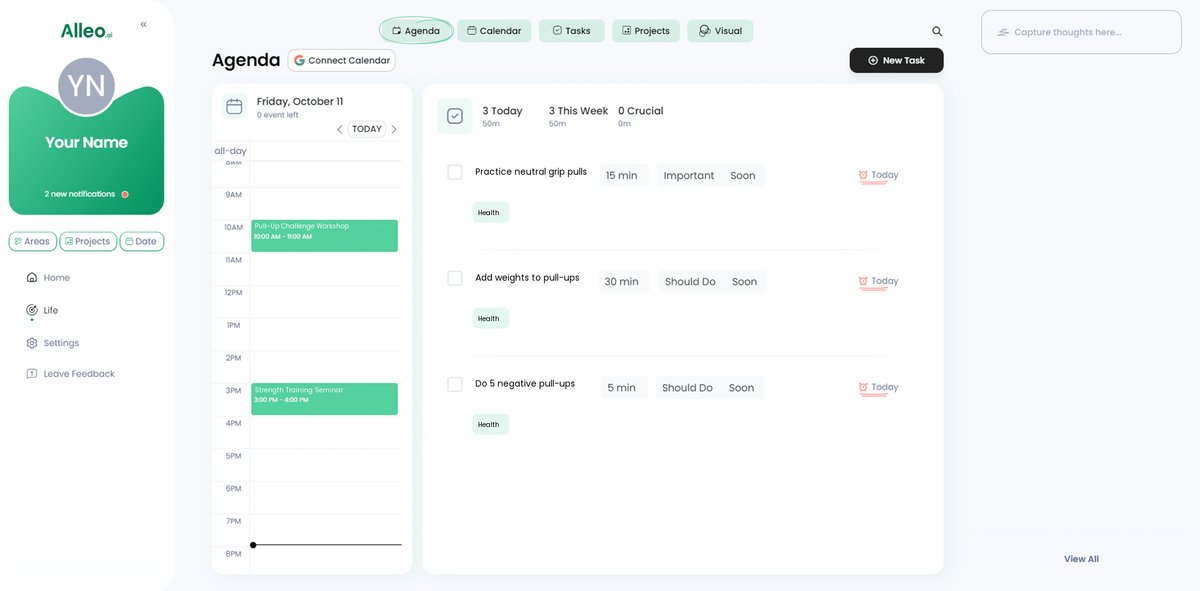4 Proven Methods to Boost Your Pull-Up Strength with Variations for Fitness Enthusiasts
Are you struggling with whether to incorporate pull-up strength variations like chin-ups and wide pull-ups into your routine to improve your overall pull-up performance?
As a life coach, I’ve helped many fitness enthusiasts navigate these challenges. I often encounter confusion around diversifying workout routines for optimal results, especially when it comes to upper body strength training and back muscle development.
In this post, you’ll discover proven strategies to enhance your pull-up strength through varied exercises. We’ll cover pull-up progression techniques like neutral grip pull-ups, weighted pull-ups, and more. These pull-up variations for muscle growth can significantly impact your bodyweight workout routines.
Let’s dive in and explore these pull-up strength variations.

Understanding the Pull-Up Dilemma
When you stick to just one type of pull-up strength variation, you risk muscle imbalances and hitting a plateau. Many clients initially struggle with which pull-up progression techniques to incorporate.
This confusion can lead to frustration and stalled progress in upper body strength training.
I often see fitness enthusiasts hesitant to try new pull-up variations for muscle growth. They fear it might disrupt their bodyweight workout routines or lead to injury.
However, mixing up your exercises can actually enhance overall back muscle development and joint health.
Imagine feeling stuck, unable to break through your current pull-up limits. It’s a common issue, but incorporating diverse pull-up strength variations can make a significant difference.

A Comprehensive Approach to Improving Pull-Up Strength
Overcoming this challenge requires a few key steps. Here are the main areas to focus on to make progress with pull-up strength variations:
- Incorporate Neutral Grip Pull-Ups for Joint Health: This reduces shoulder and wrist strain while enhancing back muscle development.
- Use Progressive Overload with Weighted Pull-Ups: Gradually increase weight to challenge your muscles, a key pull-up progression technique.
- Practice “Grease the Groove” with Frequent Reps: Spread sets of pull-ups throughout the day as part of your bodyweight workout routine.
- Add Negative Pull-Ups to Build Strength: Focus on a slow descent to maximize muscle engagement and improve upper body strength training.
Let’s dive into these pull-up strength variations!
1: Incorporate neutral grip pull-ups for joint health
Incorporating neutral grip pull-ups, one of the essential pull-up strength variations, is crucial for reducing strain on your shoulders and wrists.
Actionable Steps:
- Start performing neutral grip pull-ups twice a week to minimize joint strain and improve upper body strength training.
- Gradually increase your repetitions each week to monitor your progress and build endurance as part of your pull-up progression techniques.
- Pair neutral grip pull-ups with other joint-friendly exercises like rows and push-ups for balanced upper body strength and back muscle development.
Explanation:
These steps help you avoid injuries while improving your pull-up strength. Neutral grip pull-ups can reduce joint stress and enhance overall muscle development in your bodyweight workout routines.
According to Major Lutie, incorporating these variations can lead to balanced strength and joint health.
Key benefits of neutral grip pull-ups include:
- Reduced stress on shoulder joints
- Improved grip strength exercises
- Enhanced bicep activation
By diversifying your routine with pull-up strength variations, you ensure comprehensive muscle engagement and prevent plateaus in your upper body strength training.

2: Use progressive overload with weighted pull-ups
Using progressive overload is crucial for continuously challenging your muscles and enhancing pull-up strength variations.
Actionable Steps:
- Begin by adding small weights (e.g., 5 lbs) to your pull-ups once you can perform 10 reps with proper form, as part of your pull-up progression techniques.
- Incrementally increase the weight every two weeks to consistently challenge your muscles and improve upper body strength training.
- Track your progress using a fitness journal or app to stay motivated and adjust your weights as needed, focusing on back muscle development.
Explanation:
These steps ensure that your muscles are constantly challenged, promoting growth and strength. Progressive overload is a key principle in strength training, helping to avoid plateaus in your bodyweight workout routines.
According to Strength Warehouse USA, incorporating weighted pull-ups can significantly boost your overall upper body strength. By tracking your progress, you can make necessary adjustments and stay motivated, enhancing your grip strength exercises.
This method will help you steadily improve your pull-up performance, ensuring continuous progress in your pull-up strength variations.

3: Practice “grease the groove” with frequent reps
Incorporating the “grease the groove” method is crucial for building endurance and neuromuscular coordination in pull-up strength variations.
Actionable Steps:
- Perform 5-7 sets of pull-ups throughout the day, using 50-70% of your max reps for each set, as part of your pull-up progression techniques.
- Integrate this technique into your daily upper body strength training routine for at least two weeks to see noticeable improvements.
- Combine “grease the groove” with other strength exercises to prevent overuse injuries and ensure balanced muscle development, including back muscle development.
Explanation:
These steps help you build endurance and coordination by frequently engaging your muscles without overexertion. The “grease the groove” method spreads out your pull-up sets, allowing for consistent practice in your bodyweight workout routines.
According to Reddit Bodyweight Fitness, this technique can significantly enhance your pull-up performance. By adding variety, you avoid repetitive strain and support overall muscle growth through various pull-up strength variations.
Benefits of the “grease the groove” method:
- Increased neural efficiency
- Improved muscle memory
- Greater overall pull-up volume
This method keeps you active throughout the day and steadily improves your pull-up strength, complementing other pull-up assistance exercises.

4: Add negative pull-ups to build strength
Adding negative pull-ups is essential for building strength and overcoming plateaus in your pull-up routine. This pull-up strength variation is crucial for upper body strength training.
Actionable Steps:
- Start performing 3 sets of 5 negative pull-ups, focusing on a slow descent (3-5 seconds) to maximize muscle engagement and back muscle development.
- Gradually increase the duration of the descent each week to continuously challenge your muscles and track progress in your bodyweight workout routines.
- Integrate negative pull-ups into your regular pull-up routine to ensure balanced strength development and enhance your pull-up progression techniques.
Explanation:
These steps help you build strength by emphasizing the eccentric phase of the pull-up. Negative pull-ups are effective for engaging muscles and promoting growth, making them excellent pull-up assistance exercises.
According to Wikipedia, focusing on the descent can enhance overall muscular development and prevent plateaus. Incorporating this variation ensures a comprehensive approach to improving pull-up performance and grip strength exercises.
Tips for effective negative pull-ups:
- Use a stable platform to start from the top position
- Focus on controlled, slow descents to maximize core engagement during pull-ups
- Incorporate different grip variations for balanced development, similar to a chin-up vs. pull-up comparison
By adding negative pull-ups, you’ll steadily increase your strength and see noticeable improvements in your pull-up strength variations and overall muscle growth.

Partner with Alleo on Your Pull-Up Strength Journey
We’ve explored the challenges of improving pull-up strength with variations. Did you know you can work with Alleo to make this journey easier and faster, especially when it comes to mastering pull-up strength variations and upper body strength training?
With Alleo, setting up an account is simple. Create a personalized plan tailored to your fitness goals, including pull-up progression techniques and bodyweight workout routines.
Alleo’s AI coach offers affordable, tailored coaching support, just like a human coach, guiding you through pull-up assistance exercises and back muscle development.
Receive full coaching sessions and a free 14-day trial, requiring no credit card. Alleo follows up on your progress, handles changes, and keeps you accountable via text and push notifications, ensuring you stay on track with your pull-up strength variations and core engagement during pull-ups.
Ready to get started for free? Let me show you how to enhance your pull-up strength and explore various pull-up variations for muscle growth!
Step 1: Log In or Create Your Account
To start your pull-up improvement journey with Alleo, simply log in to your account or create a new one to access personalized AI coaching for enhancing your pull-up strength.

Step 2: Choose Your Pull-Up Improvement Goal
Select “Building better habits and routines” to create a consistent pull-up practice that incorporates the varied exercises discussed, helping you overcome plateaus and achieve steady progress in your pull-up strength.

Step 3: Select “Health” as Your Focus Area
Choose “Health” as your focus area in Alleo to tailor your pull-up improvement journey, ensuring you receive targeted guidance on exercise variations, progressive overload, and injury prevention strategies that will enhance your overall fitness and strength.

Step 4: Starting a coaching session
Begin your journey with Alleo by participating in an initial intake session, where you’ll discuss your pull-up goals and create a personalized plan to improve your strength and technique.

Step 5: Viewing and Managing Goals After the Session
After your coaching session on improving pull-up strength, check the Alleo app’s home page to view and manage the personalized goals you discussed, allowing you to track your progress and stay motivated in your fitness journey.

Step 6: Adding events to your calendar or app
Track your pull-up progress by adding workout events to the Alleo app’s calendar, allowing you to easily monitor your strength gains and stay accountable to your fitness goals.

Embrace Variation for Optimal Pull-Up Strength
By now, you understand how essential it is to diversify your pull-up strength variations routine. This approach prevents muscle imbalances and keeps your upper body strength training progress on track.
Incorporating pull-up progression techniques like neutral grip pull-ups, weighted pull-ups, and negative pull-ups can significantly boost your strength. Each method offers unique benefits and challenges to enhance your performance and back muscle development.
Remember, consistency and variation are key in bodyweight workout routines.
I know firsthand how frustrating plateaus can be. But with these pull-up strength variations and strategies, you can break through your limits.
Don’t forget, Alleo is here to support you with pull-up assistance exercises.
Ready to elevate your pull-up game? Embrace these techniques and start your journey with Alleo today.
Try it for free!